George Stubbs
Paintings
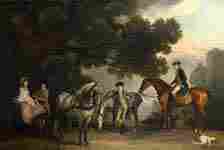
The Milbanke and Melbourne Families
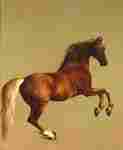
Whistlejacket
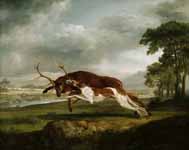
Hound Coursing a Stag
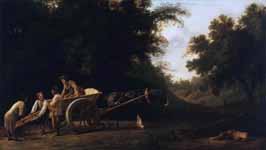
Laborers Loading a Brick Cart
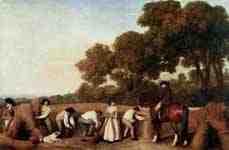
At the grain harvest
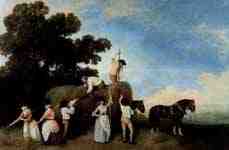
Haymaking
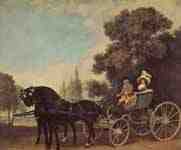
Lady and gentleman in a Phaeton
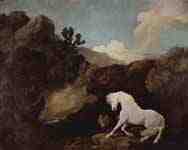
Horse frightened by a lion
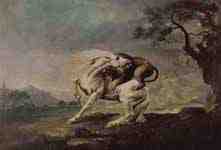
Lion attacking a horse
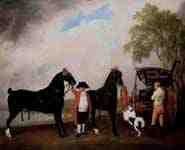
The Phaeton of the Prince of Wales
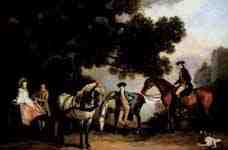
The Milbanke and Melbourne Families
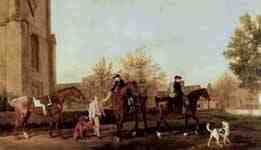
The hunters leave Southill
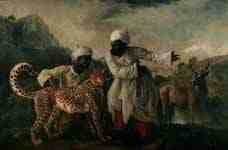
Cheetah with two Indian servants and a deer
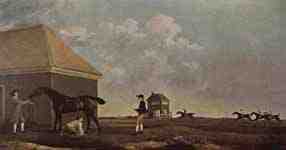
Gimcrack with a groom on Newmarket Heath
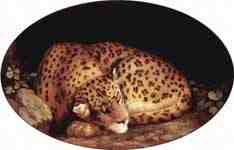
Leopard Oval
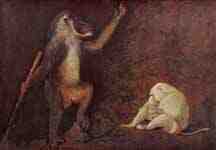
Baboon and Albino Macaque
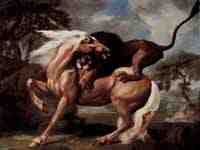
Horse is attacked by a lion
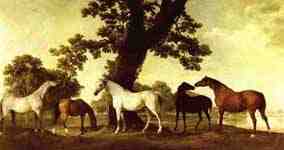
Horse in a Landscape
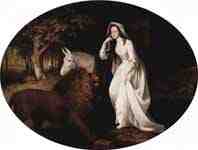
Portrait of Isabella Saltonstall as Una, Oval
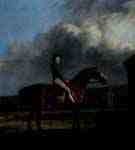
Portrait of the Jockeys John Larkin, detail

Portrait of the Jockeys John Larkin, detail
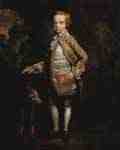
Portrait of John Nelthorpe as a child
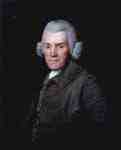
Portrait of Richard Wedgewood
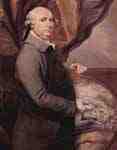
Self-portrait
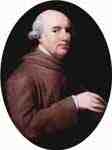
Self-portrait, oval
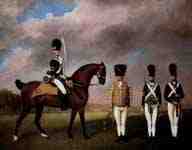
Soldiers of the 10th Dragoons
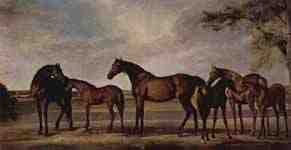
Mares and Foals
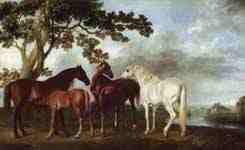
Mares and Foals in a River Landscape
Buy Fine Art Prints
George Stubbs (25 August 1724 – 10 July 1806) was an English painter, best known for his paintings of horses.
Biography
Stubbs was born in Liverpool, the son of a currier and leather merchant. Information on his life up to age thirty-five is sparse, relying almost entirely on notes made by fellow artist Ozias Humphry towards the end of Stubbs's life. Stubbs worked at his father's trade until he was 15 or 16, and after his father's death in 1741 was briefly apprenticed to a Lancashire painter and engraver named Hamlet Winstanley. He soon left as he objected to the work of copying to which he was set. Thereafter as an artist he was self-taught. In the 1740s he worked as a portrait painter in the North of England and from about 1745 to 1751 he studied human anatomy at York County Hospital. He had had a passion for anatomy from his childhood, and one of his earliest surviving works is a set of illustrations for a textbook on midwifery which was published in 1751.
In 1754 Stubbs visited Italy.[1] Forty years later he told Ozias Humphry that his motive for going to Italy was, "to convince himself that nature was and is always superior to art whether Greek or Roman, and having renewed this conviction he immediately resolved upon returning home". In 1756 he rented a farmhouse in the village of Horkstow, Lincolnshire, and spent 18 months dissecting horses, assisted by his common-law wife, Mary Spencer.[2] He moved to London in about 1759 and in 1766 published The anatomy of the Horse. The original drawings are now in the collection of the Royal Academy.
Even before his book was published, Stubbs's drawings were seen by leading aristocratic patrons, who recognised that his work was more accurate than that of earlier horse painters such as James Seymour, Peter Tillemans and John Wootton. In 1759 the 3rd Duke of Richmond commissioned three large pictures from him, and his career was soon secure. By 1763 he had produced works for several more dukes and other lords and was able to buy a house in Marylebone, a fashionable part of London, where he lived for the rest of his life.
Whistlejacket. National Gallery, London.
His most famous work is probably Whistlejacket, a painting of a prancing horse commissioned by the 2nd Marquess of Rockingham, which is now in the National Gallery in London. This and two other paintings carried out for Rockingham break with convention in having plain backgrounds. Throughout the 1760s he produced a wide range of individual and group portraits of horses, sometimes accompanied by hounds. He often painted horses with their grooms, whom he always painted as individuals. Meanwhile he also continued to accept commissions for portraits of people, including some group portraits. From 1761 to 1776 he exhibited at the Society of Artists, but in 1775 he switched his allegiance to the recently founded but already more prestigious Royal Academy.
Stubbs also painted more exotic animals including lions, tigers, giraffes, monkeys, and rhinoceroses, which he was able to observe in private menageries. He became preoccupied with the theme of a wild horse threatened by a lion and produced several variations on this theme. These and other works became well known at the time through engravings of Stubbs's work, which appeared in increasing numbers in the 1770s and 1780s.
Mares and Foals in a Landscape. 1763-68.
Stubbs also painted historical pictures, but these are much less well regarded. From the late 1760s he produced some work on enamel. In the 1770s Josiah Wedgwood developed a new and larger type of enamel panel at Stubbs's request. Stubbs hoped to achieve commercial success with his paintings in enamel, but the venture left him in debt.[3] Also in the 1770s he painted single portraits of dogs for the first time, while also receiving an increasing number of commissions to paint hunts with their packs of hounds. He remained active into his old age. In the 1780s he produced a pastoral series called Haymakers and Reapers, and in the early 1790s he enjoyed the patronage of the Prince of Wales, whom he painted on horseback in 1791. His last project, begun in 1795, was A comparative anatomical exposition of the structure of the human body with that of a tiger and a common fowl, fifteen engravings from which appeared between 1804 and 1806. The project was left unfinished upon Stubbs's death at the age of 81 on 10 July 1806, in London.
Stubbs's son George Townly Stubbs was an engraver and printmaker.
Notes
1. ^ The Great Artists: part 50: Stubbs. 1985. London: Marshall Cavendish Ltd. p. 1571.
2. ^ The Great Artists: part 50: Stubbs. 1985. London: Marshall Cavendish Ltd. p. 1572.
3. ^ The Great Artists: part 50: Stubbs. 1985. London: Marshall Cavendish Ltd. p. 1574.
References
* George Stubbs's biography
Further reading
* Boyle, Frederick & Mayer, Joseph. Memoirs of Thomas Dodd, William Upcott, and George Stubbs, R.A (Liverpool: D. Marples, 1879).
* Lee Sidney (Ed.). Dictionary of national biography, volume 55 (London: Smith, Elder & Co., 1898) pp. 113-6.
* Gilbey, Walter. Animal Painters of England from the Year 1650, Volume 2 (Vinton, 1900) p. 192 ff.
* Egerton, Judy. George Stubbs, 1724-1806 (Tate Publishing Ltd, 1984).
* Morrison, Venetia. Art of George Stubbs (Headline Book Pub., 1989).
* Myrone, Martin. George Stubbs (British Artists series) (Tate Publishing, 2002).
Retrieved from "http://en.wikipedia.org/ ", Text is available under the Creative Commons Attribution-ShareAlike License
